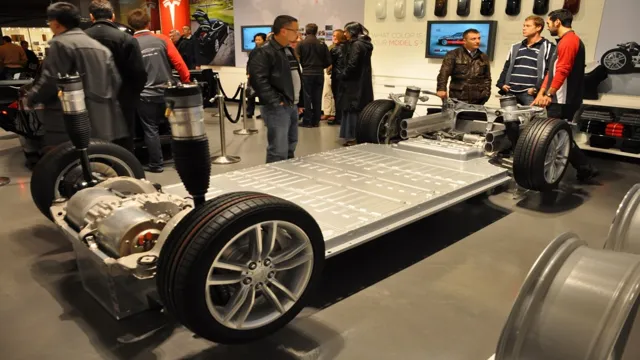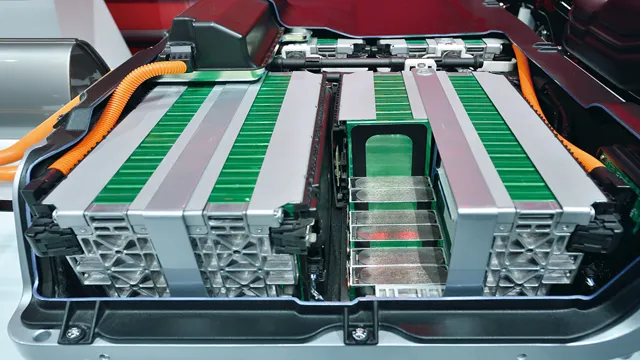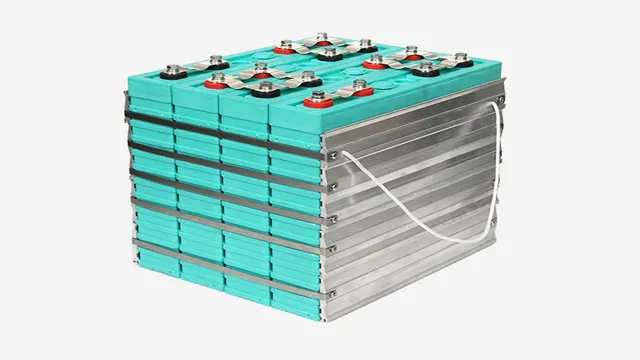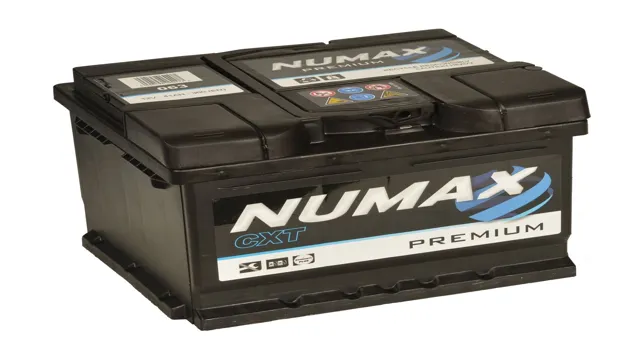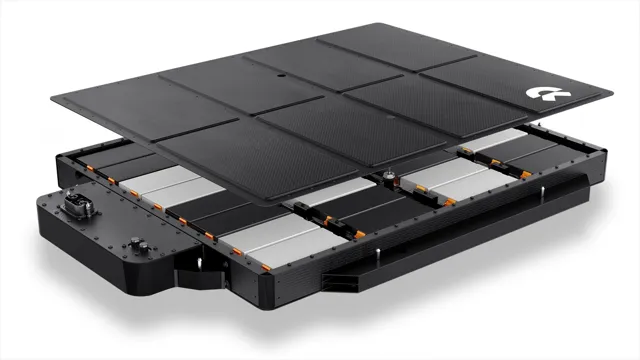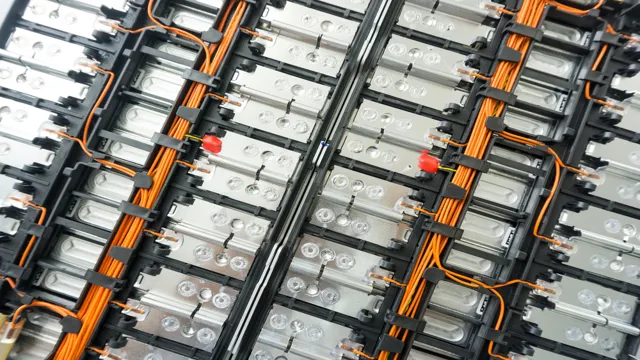Revitalize your Tesla with a new Electric Car Battery Replacement: Go farther and faster than ever before
Ready to dive into the world of electric vehicles but hesitant to hit the road with a fear of battery depletion? Don’t worry! With increasing numbers of people switching to electric cars, it’s crucial to know a few basic things about replacing EV batteries. Tesla, the pioneering company of the EV industry, prides itself on manufacturing electric cars with long battery lives. However, like many batteries, they eventually need replacement.
EV battery replacement is not a common topic, but it is essential for any EV owner to understand. In this blog post, let’s take a look at what Tesla owners need to know about electric car battery replacement.
What’s the lifespan of a Tesla battery?
If you own a Tesla, you may be curious about the lifespan of your car’s battery. While many factors can affect it, including driving habits and environmental conditions, most Tesla battery packs are designed to last at least 500,000 miles before needing to be replaced. In fact, the company offers a battery warranty of up to 8 years or 150,000 miles, depending on the model.
However, it’s important to note that this warranty only covers defects in materials or workmanship, not everyday wear and tear. If you do need to replace your battery, it can be quite expensive, ranging from $5,000 to $16,000 depending on the model and other factors. Fortunately, Tesla is continually working on improving battery technology and reducing costs, so it’s possible that replacements may become more affordable in the future.
Overall, if you take good care of your Tesla and drive it responsibly, you can expect your battery to last for many years to come.
Exploring Tesla battery degradation stats
Tesla battery degradation Tesla’s electric vehicles have undoubtedly revolutionized the automotive industry, but one of the major concerns is the lifespan of their batteries. Tesla batteries are designed to last between 300,000 to 500,000 miles, which includes a battery warranty that covers up to 8 years or 150,000 miles, whichever comes first. However, several factors come into play, such as the vehicle’s usage patterns and environmental conditions, that affect the battery’s lifespan and degradation.
According to a study conducted by Plug In America, Tesla battery degradation rates are low, with an average loss of only 5% after 50,000 miles. The study also revealed that vehicles with firmware updates tended to have less battery degradation than those without. Therefore, Tesla owners should take care of their battery by avoiding extreme heat or cold, charging to 80% instead of 100%, and minimizing high-speed charging sessions.
By doing so, they can extend the lifespan of their battery and ensure maximum driving range.
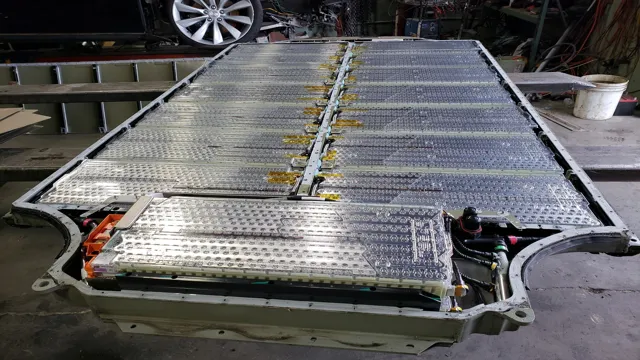
Factors that affect battery lifespan
When it comes to battery lifespan, there are several factors that come into play, such as temperature, usage patterns, and charging habits. These factors can affect how long a battery lasts, and this is no different for Tesla batteries. On average, a Tesla battery can last for around 300,000 to 500,000 miles or around 10 to 15 years, depending on various factors.
However, these numbers may vary depending on how well the battery is maintained and used. For example, frequent fast charging or leaving the battery at very low or high temperatures for extended periods can significantly reduce its lifespan. To get the most out of a Tesla battery, it’s important to practice good charging habits, avoid extreme temperatures, and limit fast charging as much as possible to extend its lifespan.
Is battery replacement necessary for Teslas?
Many people wonder if electric car battery replacement is necessary for Teslas, and the answer is not a simple yes or no. Firstly, it depends on how long you plan to keep your Tesla; the battery is designed to last for over a decade, but it will eventually lose some of its capacity. Secondly, it depends on your driving habits; if you frequently engage in activities that deplete the battery, such as rapid acceleration and hard braking, it will wear out faster.
Lastly, it depends on your local climate; extreme temperatures can affect the battery’s performance and longevity. Overall, while Tesla batteries generally have a long lifespan, it’s still important to schedule regular maintenance appointments with certified technicians to monitor the battery’s health and identify any potential issues early on. In the event that a battery replacement is necessary, it’s good to know that Tesla offers a warranty for up to eight years, depending on the model.
So, while battery replacement may not be necessary for Teslas in the near future, it’s always good to plan ahead for the long-term to ensure you get the most out of your electric vehicle.
When to get a Tesla battery replacement
As a Tesla owner, you might be wondering when it’s time to replace your battery. While Tesla batteries are designed to last for up to 300,000 miles, there will come a time when battery replacement might be necessary. The lifespan of your battery largely depends on your driving habits and how well you take care of your vehicle’s battery.
If you frequently fast-charge your battery or expose it to extreme temperatures, it could wear out faster. However, if you take good care of your battery, it might remain operational for over a decade. It’s important to note that you won’t necessarily need to replace the entire battery.
In most cases, battery packs can be replaced individually, which is more cost-effective than replacing the entire battery. If you notice that your battery isn’t performing as it should, it might be time to consider a replacement. Contact a Tesla service center or technician to have your battery evaluated and have peace of mind while driving your electric vehicle.
Cost of a Tesla battery replacement
One concern that new Tesla owners often have is the cost of battery replacement. While some EVs require battery replacements every few years, Teslas are designed to last a long time – in fact, most Teslas come with warranties that guarantee the battery will retain a significant portion of its original capacity for at least 8 years. However, even the best batteries can degrade over time with regular use.
If you do end up needing a battery replacement for your Tesla, it’s important to note that the cost will vary depending on the model and the age of the vehicle. For example, a battery replacement for a Model S can cost anywhere from $5,000 to $7,000, while a replacement for a newer Model 3 may cost closer to $3,500. While this may seem like a high cost, it’s important to keep in mind that a new battery can give your Tesla a new lease on life, greatly improving its range and performance.
Plus, as the technology becomes more widespread and the market for replacement batteries grows, prices are likely to come down over time.
Tesla’s battery replacement program
Tesla’s battery replacement program has been a topic of discussion among EV enthusiasts lately. The need for battery replacement is a common concern for most electric cars, but many Tesla owners question whether it’s even necessary for their vehicles. Tesla’s batteries are designed to last for a long time and come with an eight-year warranty, and the company estimates that their batteries can last up to 300,000 miles.
However, several factors can affect the lifespan of the battery, such as driving habits, weather conditions, and the age of the vehicle. In some cases, replacement may be necessary. Tesla’s battery replacement program offers different options depending on the age of the car and the type of battery.
It’s important for Tesla owners to understand the options available to them and to consider their individual circumstances before making a decision.
Alternatives to battery replacement
If you’re a Tesla owner, the thought of electric car battery replacement may have crossed your mind. However, replacing the battery can be costly and time-consuming. Fortunately, there are some alternatives you can consider before jumping to the battery replacement option.
One alternative is to simply replace the faulty cells in the battery pack rather than replacing the entire pack. This can significantly reduce the cost of battery replacement. Another alternative is to upgrade to a higher-capacity battery if your car is eligible.
This can extend the life of your vehicle and improve its performance. Additionally, you can also consider leasing a battery. This means you pay a monthly fee to use the battery rather than owning it, which can help reduce the upfront cost of replacement.
Whatever option you choose, it’s important to do your research and consult with experts to determine the best and most cost-effective solution for your specific needs.
Tesla’s warranty and extended warranty options
When it comes to owning a Tesla, it’s important to know your warranty options. Tesla offers a standard 4-year or 50,000-mile warranty, but for those who want additional coverage, there are extended warranty options. One of the most common concerns when it comes to Tesla ownership is the cost of replacing the battery, which can be quite expensive.
However, there are alternatives to battery replacement that can save you money. For example, Tesla offers a battery refurbishment service that can replace only the portion of the battery that needs to be replaced, rather than the entire battery. Additionally, Tesla offers a trade-in program for older Tesla models, which can provide credit for a new vehicle purchase.
It’s worth exploring all of these options before considering a costly battery replacement or a new vehicle purchase.
Tips for maximizing battery lifespan
When it comes to maximizing battery lifespan, there are some alternatives to battery replacement to consider. One option is to use a power bank or portable charger to keep your device charged on the go. This can help extend the longevity of your battery by reducing the number of charging cycles it goes through.
Another option is to adjust the settings on your device to minimize battery usage, such as lowering the screen brightness and turning off notifications for apps you don’t use frequently. Additionally, you can try using battery-saving modes on your device, which can help extend the battery life by limiting background app activity and other battery-draining processes. By implementing these alternatives, you can potentially extend the lifespan of your battery and avoid the expense of having to replace it frequently.
Final thoughts on Tesla battery replacement
When it comes to electric car battery replacement, Tesla has been leading the charge with innovative solutions. While some skeptics have worried about the cost and difficulty of replacing a Tesla battery, the reality is that it’s actually a relatively simple and straightforward process. Thanks to Tesla’s modular approach to battery design, individual modules can be easily replaced as needed, reducing the cost and complexity of the process.
Additionally, Tesla’s battery health monitoring system provides owners with detailed information about their battery’s condition and performance, allowing them to make smart decisions about when to replace it. Overall, while electric car battery replacement is undoubtedly a concern for many owners, Tesla has shown that it’s a manageable and affordable process that doesn’t have to be a source of anxiety or uncertainty.
Conclusion
In conclusion, the Tesla electric car battery replacement represents a significant step forward for sustainable transportation. With the ever-increasing need for environmental responsibility, consumers have been searching for affordable and reliable alternatives to traditional gasoline vehicles. Tesla’s battery replacement technology provides us with just that, offering customers a cleaner and more efficient way to power their cars.
As we continue on this path towards a greener future, we can look to Tesla as a guiding light in the push towards cleaner, more sustainable transportation options. So, let’s buckle up and enjoy the ride towards a more eco-conscious world with Tesla’s electric car battery replacement!”
FAQs
How often do you need to replace the battery in a Tesla electric car?
The battery in a Tesla electric car is designed to last for over 500,000 miles, so there is typically no need to replace it during the life of the vehicle.
Can the battery in a Tesla be replaced if it does fail?
Yes, the battery in a Tesla can be replaced if it does fail. However, it is a complex process that should only be performed by a trained technician.
How much does it cost to replace the battery in a Tesla electric car?
The cost of replacing the battery in a Tesla can vary depending on the model, but it can range from $5,000 to $20,000.
Is it possible to upgrade the battery in an older Tesla model to a newer, more powerful battery?
Yes, it is possible to upgrade the battery in an older Tesla model to a newer, more powerful battery. However, this can be a costly process and may require other upgrades to the vehicle’s systems as well.

